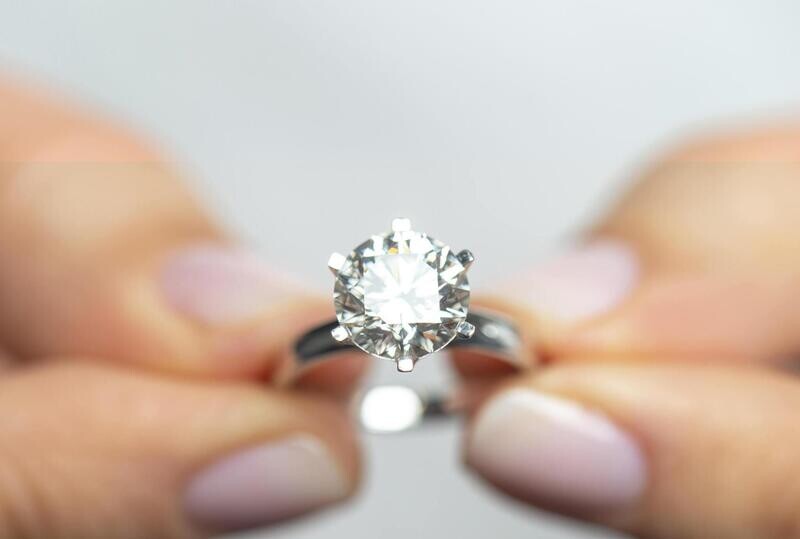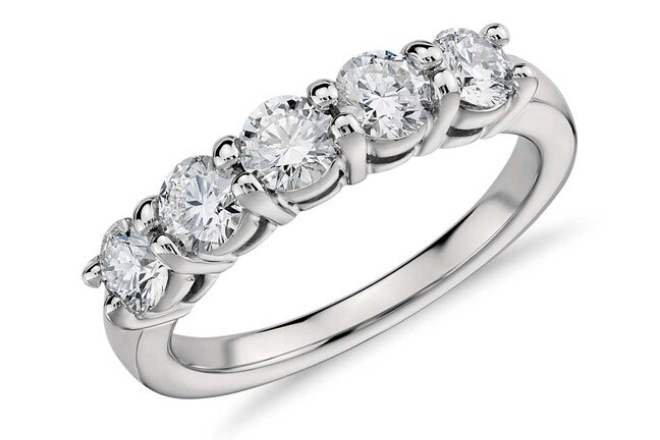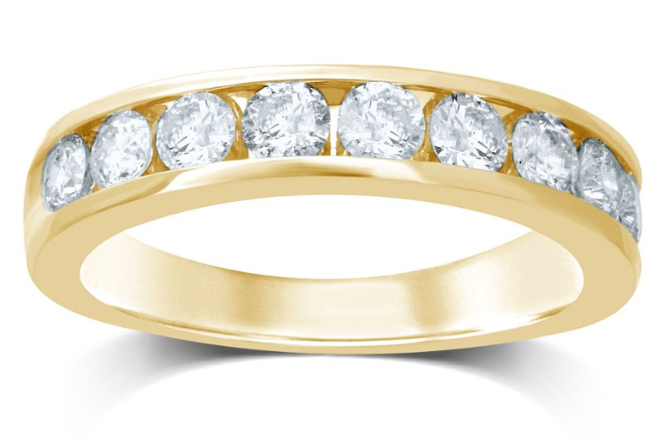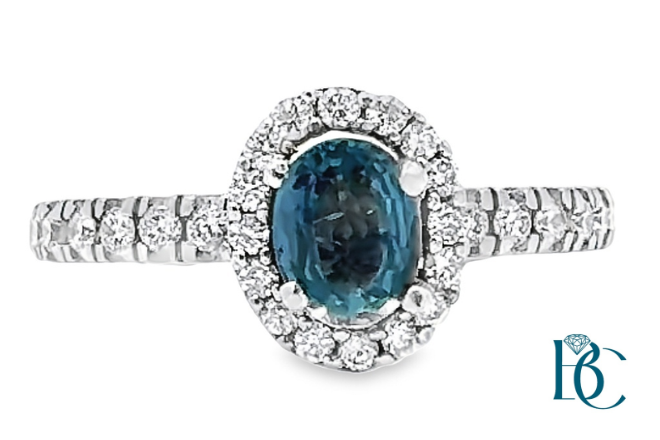How to Spot a Fake Diamond Engagement Ring
The pursuit of the ideal diamond often intertwines with sentiments of love, trust, and lifelong commitment. Yet the anguish of discovering that the symbol of eternal devotion is anything but authentic can be devastating.
Various stones can mimic the appearance of real diamonds, including zircon, cubic zirconia, moissanite, and lab-grown diamonds, which is an ethical alternative. Recognizing these imitations is the first step in identifying a fake diamond engagement ring.
So when buying diamond jewelry, authenticity matters, and that includes confirming the 4Cs of diamonds, as these stones are valuable and often expensive. You want to be sure that you buy something that is real and of high quality, especially for something as significant as an engagement ring.
In this guide, we’ll share how to spot genuine diamonds and provide some simple tips you can use to run some authenticity tests. Get ready to test your diamonds.
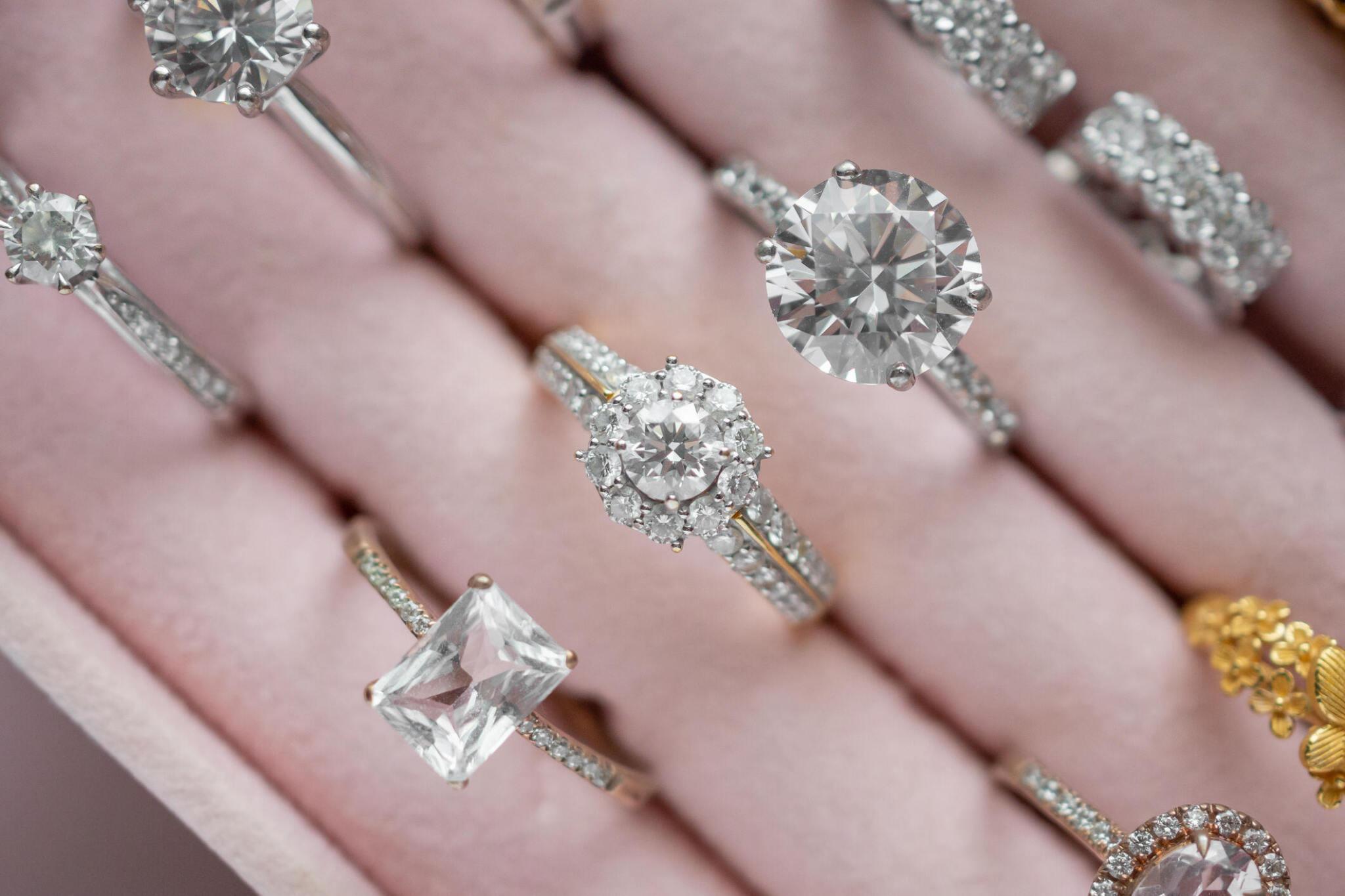
Diamond rings displayed on pink tray
Color Variations
Rare diamonds may display pink, blue, or yellow hues, while deviations from these colors may indicate counterfeit stones. The GIA color scale, which ranges from D (perfectly colorless) to Z (yellow or brown), dictates diamond quality and beauty.
Clarity
Genuine diamond engagement rings usually have clarity, so they’re free from major internal flaws or blemishes, letting light pass through without obstruction. The Gemological Institute of America (GIA) uses a clarity scale ranging from FL (flawless) to I (visible inclusions), cautioning against categories I1, I2, and I3.
Carat Weight
The weight of diamonds, measured in carats, reflects their size and rarity, influencing both their value and appeal. A diamond engagement ring’s price increases exponentially with weight, and one carat is equivalent to 0.20 grams.
Cut Quality
A well-cut diamond enhances its brilliance and overall appearance, contributing to its timeless elegance. The cut type and quality affect its price. The brilliant cut is the most common and expensive, with symmetry and proportion crucial for optimal light reflection and shine.
Fluorescence
Diamonds shine with a mesmerizing brilliance, displaying extraordinary fire and sparkle that instantly grab attention. Fluorescence can affect a diamond’s price, particularly under dark neon light conditions. Stones with strong fluorescence may be valued less than those with minimal fluorescence.
Basic Tests You Can Perform at Home
To verify the authenticity of your diamond, there are some simple tests you can perform without requiring extensive equipment. However, it’s important to be cautious to avoid damaging or scratching your diamond engagement rings.
Water Test: Real diamonds have high density and sink in water, while fake ones may float due to their lower density. Simply drop the stone into a glass of water to observe its behavior.
Fog Test: Breathe on it; real diamonds disperse fog quickly due to their high thermal conductivity. Fake ones, however, retain fog for longer periods of time.
Dot Test: Place the diamond on a piece of white paper with a dot. If there’s no circular reflection visible, it’s likely real. Fake ones may reveal the dot due to their composition.
Black Light Test: Under black light, real diamonds emit a blue fluorescence, while fakes exhibit different colors. This test offers additional insights into the stone’s authenticity.
Sparkle Test: Real diamonds sparkle with grayish and white hues, while fakes often display rainbow-colored reflections. Pay attention to the quality and intensity of the sparkle.

Seek Professional Assistance for Further Examination
While you can perform those tests at home, you may still overlook crucial aspects of whether the diamond is fake or real. Your evaluation might indicate whether it’s real or fake, but how certain can you be? Consulting with professionals is the most reliable way to confirm the authenticity of your diamond engagement ring, ensure its value, and protect your investment.
Our team at Barry Coats Jewelers can provide advanced tests and certifications to confirm the authenticity of an engagement ring made with diamonds. With our expertise, we will be able to tell whether you hold a fake or genuine one through some tests, such as:
1. Visual Inspection
Experienced jewelers often use a loupe, which is a small magnifying lens, to closely examine the diamond for any imperfections or inconsistencies. With our authentic diamond collection, we may also compare the suspected diamond to it.
Natural diamonds often have imperfections like inclusions and blemishes, which are unique to each stone and can help distinguish them from synthetic or imitation diamonds.
2. Diamond Engagement Ring Tester
We use electronic diamond testers that measure the thermal conductivity of the gemstone. Natural diamonds have high thermal conductivity, meaning they conduct heat quickly. By testing how fast heat passes through a stone, we can determine if it’s a real diamond or a simulant like cubic zirconia, which has different thermal properties.
3. UV Light Test
Diamonds may emit a bluish fluorescence when exposed to ultraviolet (UV) light. While not all diamonds fluoresce, this test can sometimes help distinguish between natural diamonds and certain synthetic or treated stones.
4. Refraction Test
We may also use a refractometer to measure the diamond’s refractive index, which is how much light bends as it passes through the stone. This test can help determine if the gemstone’s refractive properties are consistent with those of a genuine diamond.
5. Certification Verification
We may request or verify certification documents. Gemological laboratories like the Gemological Institute of America (GIA) and the International Gemological Institute (IGI) provide certification documents for diamonds based on rigorous testing and analysis.
These documents verify the diamond’s authenticity, cut, color, clarity, and carat weight.
Is it Real Diamond Engagement Rings?
Don’t hesitate; find out today. Bring your diamond engagement rings to Barry Coats Jewelers, and let’s confirm their authenticity once and for all.
Our team will be happy to provide you with additional tips on distinguishing fake diamonds from genuine ones. Plus, you’ll have the opportunity to explore our collection of authentic diamonds.
Contact us here.

